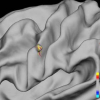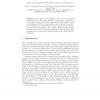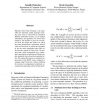889 search results - page 47 / 178 » A Statistical Shape Model without Using Landmarks |
ICPR
2006
IEEE
14 years 10 months ago
2006
IEEE
Advances in medical imaging technique make it possible to study shape variations of neuroanatomical structures in vivo, which has been proved useful in the study of neuropathology...
ICCV
2005
IEEE
2005
IEEE
Mutual Information-Based 3D Surface Matching with Applications to Face Recognition and Brain Mapping
14 years 2 months ago
Face recognition and many medical imaging applications require the computation of dense correspondence vector fields that match one surface with another. In brain imaging, surfac...
GMP
2006
IEEE
14 years 3 months ago
2006
IEEE
In this paper, we present a method that allows novice users to interactively create partially self-similar manifold surfaces without relying on shape grammars or fractal methods. ...
ACII
2005
Springer
13 years 11 months ago
2005
Springer
Active Shape Model (ASM) is one of the most powerful statistical tools for face image alignment. In this paper, we propose a novel method, called Bunch-Active Shape Model (Bunch-AS...
EMNLP
2010
13 years 7 months ago
2010
Minimum Error Rate Training is the algorithm for log-linear model parameter training most used in state-of-the-art Statistical Machine Translation systems. In its original formula...



